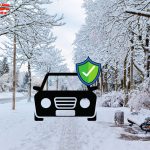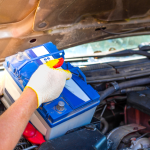Driving at night can present unique challenges that can affect our safety on the road. As the sun sets and darkness envelops the landscape, visibility decreases, making it crucial to adapt our driving habits and optimize our vehicles for night travel. Whether you’re a seasoned night driver or someone who prefers to stick to daylight hours, enhancing your vision and ensuring a safer driving experience is essential.
In this article, we’ll share nine simple yet effective hacks that can dramatically improve your nighttime visibility and help you navigate the roads with confidence. From adjusting your headlights to utilizing technology and employing smart driving techniques, these tips will empower you to tackle those after-dark journeys with ease. So, let’s shine a light on how you can drive safer and smarter when the sun goes down!
Table of Contents
- Improve Your Cars Headlights for Better Nighttime Visibility
- Understand the Importance of Proper Eye Care for Night Driving
- Utilize Technology to Enhance Your Night Driving Experience
- Adopt Smart Driving Techniques to Stay Safe After Dark
- Q&A
- Future Outlook

Improve Your Cars Headlights for Better Nighttime Visibility
Driving at night can be a challenge, especially if your headlights are dim or poorly aligned. To enhance visibility, start by cleaning your headlights. Over time, headlights can accumulate grime and oxidation, leading to reduced illumination. Use a DIY solution of baking soda and vinegar or invest in a commercial headlight restoration kit to bring back that bright shine. Additionally, consider replacing any yellowed or foggy lenses; this simple fix can significantly improve the amount of light that reaches the road.
Another effective way to boost your nighttime driving experience is by upgrading your headlight bulbs. Standard halogen bulbs can be replaced with brighter alternatives like HID (High-Intensity Discharge) or LED (Light Emitting Diode) bulbs. These options not only provide better visibility but also last longer and consume less energy. When selecting bulbs, pay attention to the color temperature; bulbs that emit a light closer to daylight (around 5000K) can help improve contrast and visibility on the road. Be sure to check your vehicle’s compatibility before making any purchases.
Read More: Everything You Need to Know About Road Tripping in an Electric Car

Understand the Importance of Proper Eye Care for Night Driving
Driving at night poses unique challenges that can be mitigated with proper eye care. Healthy vision is crucial for night driving as it enhances your ability to perceive hazards, recognize road signs, and react promptly to unexpected situations. The glare from oncoming headlights and the limited visibility of poorly lit roads can strain your eyes, making it essential to maintain optimal eye health. Regular eye exams can help detect issues such as night blindness or refractive errors, allowing you to address them before they become serious problems. Additionally, ensuring that your prescription glasses or contact lenses are up-to-date will significantly improve your night vision.
Moreover, certain lifestyle choices can also contribute to better eye health, especially when driving at night. Adequate hydration plays a vital role in keeping your eyes moist and reducing fatigue. Including nutrients like omega-3 fatty acids, vitamins A, C, and E in your diet can bolster your overall eye health. Here are some quick tips for maintaining eye health:
- Stay hydrated to keep your eyes moist.
- Eat a balanced diet rich in eye-friendly nutrients.
- Take regular breaks during long drives to reduce eye strain.
- Consider using anti-reflective lenses to reduce glare.

Utilize Technology to Enhance Your Night Driving Experience
Modern technology offers a variety of tools designed specifically to improve night driving conditions, making your journeys safer and more comfortable. One of the most effective advancements is the use of adaptive headlights, which automatically adjust the direction and range of your lights based on speed and steering angle, illuminating the road more effectively. Additionally, incorporating night vision systems can provide a significant advantage by detecting pedestrians and animals outside of the illuminated area, allowing you to respond quickly to unexpected hazards. Consider also utilizing GPS navigation apps that provide real-time traffic updates and route optimizations, ensuring you avoid poorly lit and potentially dangerous roads.
Your vehicle’s interior can benefit from technology aimed at reducing eye strain and enhancing focus. Features such as anti-glare displays on dashboards and ambient lighting can help maintain a comfortable environment. Furthermore, integrating smartphone apps that monitor fatigue can remind you to take breaks during long drives, ensuring you remain alert. Lastly, consider using blind-spot detection systems to minimize the risk of accidents, as they provide visual and auditory alerts for vehicles approaching from behind. By embracing these technological innovations, you can significantly improve your night driving experience.

Adopt Smart Driving Techniques to Stay Safe After Dark
Driving at night presents unique challenges, and adapting your driving techniques can significantly enhance your safety. One of the most effective strategies is to reduce your speed. Lower speeds give you more time to react to unexpected obstacles, whether it’s a pedestrian crossing the road or an animal darting out from the side. Additionally, maintaining a greater following distance provides extra time to stop safely if needed. Remember, your visibility is reduced after dark, so allowing more space between you and the vehicle ahead is crucial.
Another smart technique is to ensure your headlights are always in top condition. Regularly check to see that both your high beams and low beams are functioning correctly and that they are aimed properly. Properly adjusted headlights can illuminate the road ahead without blinding oncoming drivers. Moreover, consider the use of anti-glare glasses if you find nighttime driving particularly challenging due to glare from headlights. These glasses can enhance your comfort, allowing you to focus on the road more effectively.
Q&A
Q&A:
Q: Why is driving at night more challenging than driving during the day?
A: Night driving presents unique challenges due to reduced visibility, glare from oncoming headlights, and the presence of pedestrians or animals who may be harder to see. These factors can impede your reaction time and overall safety, making it crucial to adopt strategies that enhance your vision and awareness.
Q: What are some hacks to improve my visibility while driving at night?
A: Here are nine effective hacks to boost your nighttime visibility and driving safety:
- Clean Your Windshield: Dirt and grime can scatter light and create glare. Regularly clean both the interior and exterior of your windshield.
- Adjust Your Headlights: Ensure your headlights are properly aligned and functioning. Misaligned headlights can reduce visibility and blind other drivers.
- Use High Beams Wisely: When appropriate, switch to high beams to illuminate the road better, but remember to dim them when approaching oncoming traffic.
- Limit Cabin Light: Keep the interior lights dim or off to reduce distractions and enhance your visibility of the road.
- Wear Anti-Glare Glasses: If you wear glasses, consider anti-reflective lenses to mitigate glare from headlights and streetlights.
- Increase Following Distance: Expand the distance between your vehicle and the one ahead to give yourself more reaction time in low visibility conditions.
- Don’t Stare at Lights: Instead of focusing on bright lights, look to the right side of the road to avoid being blinded by oncoming vehicles.
- Utilize Night Vision Technology: If your vehicle has night vision capabilities, make sure to use them to detect potential hazards earlier.
- Stay Alert and Reduce Speed: Fatigue can impair your vision and reaction time. Stay alert and consider reducing your speed to enhance safety.
Q: How can I ensure my vehicle is ready for night driving?
A: Regular maintenance is key. Check your headlights, taillights, and brake lights to ensure they’re all functioning properly. Additionally, inspect your windshield wipers and fluid levels to clear any rain or debris that could obstruct your view.
Q: What role does fatigue play in nighttime driving?
A: Fatigue significantly impairs cognitive functions, making it harder to focus and react quickly. Drowsy driving is akin to drunk driving in terms of risk. It’s vital to get adequate rest before hitting the road at night and take breaks if you feel tired.
Q: Are there specific weather conditions I should be particularly cautious of when driving at night?
A: Yes! Fog, rain, and snow can further reduce visibility and increase driving hazards. When faced with such conditions, use low beams, slow down, and maintain a greater following distance to stay safe.
Q: How can I practice safe driving habits at night beyond these hacks?
A: Consistently practicing safe driving habits is essential. Avoid distractions (like mobile devices), limit passengers if possible, and plan your route ahead to minimize confusion. Staying calm and focused will significantly enhance your nighttime driving safety.
Q: Is it common for drivers to feel more anxious when driving at night?
A: Absolutely! Many drivers experience heightened anxiety when driving after dark. Familiarizing yourself with your vehicle’s features and practicing the hacks mentioned can help build confidence and reduce stress.
Q: Where can I learn more about improving my nighttime driving skills?
A: Look for local driver safety courses, workshops, or online resources that focus on safe driving practices. Many organizations offer valuable tips and techniques tailored to night driving, which can enhance your skills and knowledge.
Future Outlook
enhancing your vision and driving safely at night doesn’t have to be a daunting task. By implementing these nine practical hacks, you can significantly improve your nighttime driving experience and ensure a safer journey for yourself and others on the road. Remember, small adjustments can lead to remarkable changes—whether it’s maintaining your vehicle’s headlights, utilizing anti-glare glasses, or simply planning your routes wisely. So, as you hit the road after sunset, keep these tips in mind, and enjoy the peace of mind that comes with being a well-prepared driver. Stay safe, stay alert, and happy driving!











